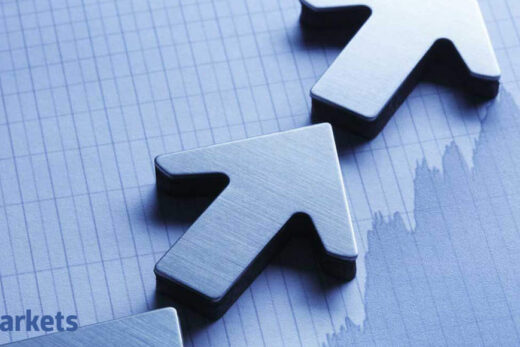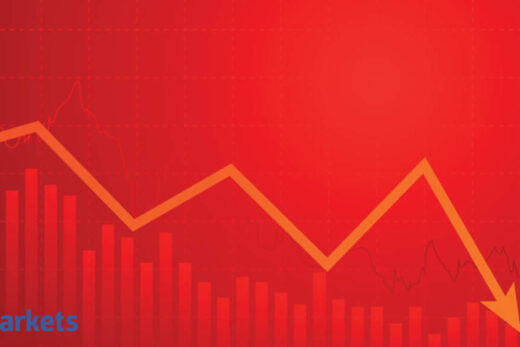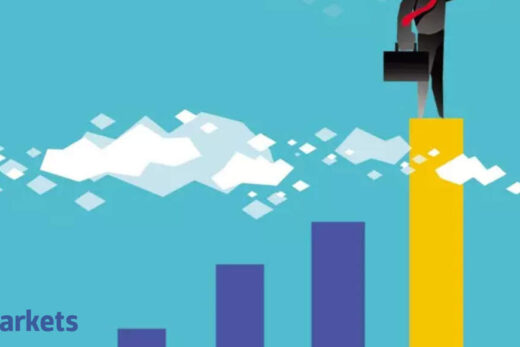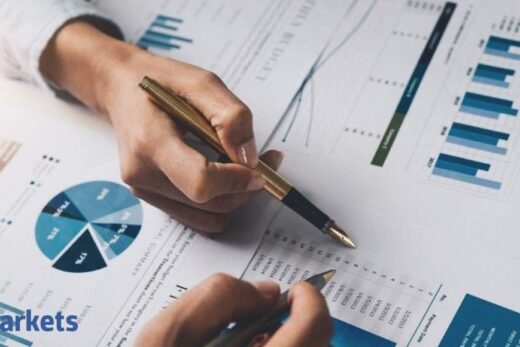Let me just throw some headlines at you. The headline one is demand disruption because of medical news, crude at $70 and companies are indicating that there is going to be a pull down in demand because of what is happening on ground. If the headlines are not favourable, why are markets holding on?
The headlines may not be our favourites but a couple of things are happening. There is a surge in global prices of several commodities and India is a producer of some of these commodities which is going to lead to inflation. But inflation in a way is positive or earnings accretive for several of the businesses in India. Crude is at $70 and some of the other commodities obviously are at multi-year highs, but that is inflation and therefore that will lead to earnings growth. That in turn will unleash the animal spirits of producers and they are going to go on a capex spree. They are going to increase capacity and we are going to see heightened economic activity. It sounds counterintuitive, but this is going to trigger some kind of heightened economic activity which bodes well.
Currently, we are facing the challenge of the second Covid wave and it has definitely impacted sentiments at the individual consumer level. A lot of discretionary spending is going to get postponed. But having said that, it is quite likely that in a couple of quarters, towards the end of this calendar year, a significantly larger share of the population will get vaccinated and it will be business back to normal. This quarter is likely to be weak. Maybe the first half of this financial year will be relatively tepid but we are going to see demand come back in the second half of this financial year and it looks like that the market is probably focussed more on the scenario two quarters away rather than what it is currently playing out.
Also, global liquidity is still there and that is something which does matter in the very short term. I believe it is a combination of all of these things which are incrementally positive and that is getting reflected in the market.
A lot will now depend on the medical front. While the second wave appears to be peaking out, there is talk about an inevitable third wave. What is the market pricing in?
The market has been very resilient in the very short term. The third wave is a known unknown, which means that we know it can come in. Unlike the second wave which caught all of us off guard as we had underestimated its strength. But the third wave is a known unknown. Between the first and the second wave, we had the remedy which is basically the vaccines. What is now going to happen between the second and the third wave is that hopefully a vast majority of the population or the urban population is likely to be vaccinated in the next three to six months.
The question is when does the third wave come? If it comes a month later, then we will have challenges of a different magnitude and a different proportion but if it comes with a gap of maybe three to four months, the impact of the third wave is going to be a lot less and hopefully a lot of lessons would have been learnt from the experience of both the first and the second waves.
Are we in for a repeat of the same play book that we saw, the same time last year? When the reopening started, the demand surprised us. Or is it going to be different this time?
I would be surprised if the demand actually surprises us and one area where it sounds a little contrarian but my view is that we are going to see a huge demand for residential real estate and the reason for that is there is a consensus that we are stepping into an inflationary environment and one of the best hedges against inflation is real estate.
Prices have not moved for almost a decade now and when there is fear, there is a tendency to flock to financial assets. Conventionally, money shifts into hard assets in India. Globally, real estate prices are on a tear. Property prices are going through the roof in the United States and Europe. I would not be surprised if something like this happens here.
Of course, it may not advance like that but even if there is a small increase in demand, even if it is investment-led demand in property prices in residential space, you will actually see a surge in demand there and if there is a bit of surge or improvement in demand for homes and other spaces, it again in a way fuels demand for many others. I come back to the same thing and I believe that the demand environment is going to get better from here onwards. Maybe it is just a couple of quarters away but I see that coming back.
It is a great point that commodity inflation is back and real estate demand is back. If you are bullish on metals, why not buy metals in the futures market? If you are bullish on real estate, why not buy a house? Why should one indirectly buy a stock of or DLF?
Yes if you are generally bullish on metal prices, then, of course, there is no harm in going out there and buying these metal futures and things of that kind. But we have to keep in mind that historically the underlying equity gives much better returns versus the end product prices which mean that if iron ore prices go up by 20%, the iron ore producer or a steel stock can go up disproportionately higher.
Owning the stock or owning the company is a higher beta play and the ability that delta has from just a 10-20% spike in iron ore prices or metal prices brings about a much higher delta in terms of earnings because that leaves the producer with a lot more cash flows. He uses those cash flows to do away with debt and there is a huge amount of savings in financial costs.
Therefore the growth in earnings is disproportionately higher. I believe that owning metal producers, owning iron ore producers and that entire pack is way better than just owning the futures. Secondly, coming back to property, you have to keep in mind the liquidity that owning a real estate developer or owning a home developer or owning any other building material kind of a company is way more liquid than owning a house. It is way more liquid. It is more tax efficient. These are some of the things which basically go in favour of owning a stock versus owning the underlying asset.
One spot of bother is autos. Demand has been destroyed and margins are under pressure, yet auto stocks have done reasonably well. Why is that?
It probably is due to the belief or faith that demand will come back and that this is a temporary lull. It is fine if volumes are down 10-15% in April, May and maybe for this quarter. In general, the auto demand or the demand for vehicles should basically come back and you will see this 10-15% dip in volume getting compensated by basically pent up demand which could basically come in.
Number two, while the rural economy or rural areas seem to be as impacted by the second Covid wave, one has to keep in mind that there are forecasts of a very strong monsoon and that 70% of the population still lives in rural areas. So a normal monsoon will mean farm prices are again going up and this is going to lead to a huge boost in farm incomes and incomes of people living in rural areas.
That extra or additional income is going to spill over into a lot of discretionary stuff like homes and automobiles or vehicles. It looks like that in a very short term, there has been an impact in terms of demand and volumes but maybe two quarters away, that demand should normalise. It should augur well for the OEMs. The question of course is how do you play this entire auto demand? You play it either by directly owning OEMs or you may be better off owning auto ancillary companies which apart from demand from OEMs have a couple of more demand drivers which is replacement demand and the demand from exports.
So there are different ways to play it but clearly the demand is poised to come back in the second half of the financial year.
has been a phenomenal wealth creator in the last one month. Do you track this one?
Yes, I track it reasonably well. The extent of the price movement is a little surprising and this has essentially happened with many other pockets of the market, especially the ones which are connected to commodities. Praj in a way is directly, indirectly connected to the sugar cycle which is again connected to ethanol.
In a way, these are all pretty much webbed into each other and so the surge in the stock prices in sugar stocks and everything else has also basically spilled over to a player like Praj. The beauty of Praj is that it is pretty much a winner takes it all in the sense that it is a real opportunity and has massive support from policy makers. Praj ends up being a disproportionate beneficiary of this and that has got reflected in their most recent quarterly performance.
But having said that, the surge in the stock price has led to a disproportionate upside from current levels. As a company it will continue to do well as the traction on the order front is fantastic and they continue to be leaders. But at this kind of a current stock price, I do not expect it to deliver massive returns the way we have seen the kind of returns unfold in the last one month or two months or maybe even in the last one year.
One has to be careful with that and moderate expectations. I believe that a lot of the strength in the near term performance is pretty much reflected in the current stock price.
How different is this market from 2017 and 2018? We saw euphoric moves in mid and small cap stocks and the end game was not great.
The only difference I would say is that in 2017-2018, a lot of poor quality stocks — companies which were almost bankrupt or where the management quality was really very bad — managed to rally and gave great returns. That was because there was a pack of investors who probably believed that reforms like demonetisation, GST and bankruptcy code will help all kinds of companies to be basically sound and solvent and there would be a huge transformation in governance standards. Based on that premise, a lot of poor quality stocks did extremely well.
This time around, mid and smallcaps are doing well but the big shift between then and now is that I believe quality is foremost in the minds of investors and traders and that to me is an extremely healthy sign. That does not mean that we cannot still have bubbles but quality bubbles can also be around valuations. So, I find the big difference between 2017-2018 and now is basically that the investors and the traders are way more cognisant about the quality of the underlying companies that they are trading or investing in.



